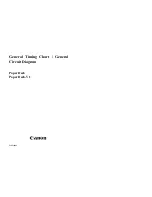
7
6
Testing
Step 1: testing the video signal
You should now see the video source you selected on your second TV. It may be necessary to
reposition the Receiver unit to make sure the built-in antenna gives the best quality picture.
Repositioning the Transmitter unit, centimetre by centimetre over the surface on which it’s
positioned, can also help to improve the quality.
Step 2: testing the remote control extender
Try out the remote control to make sure it is working correctly. Point the remote control of the
video source you are watching at the Receiver unit and change the programme number or press
Play and then Stop. A red light (figure A-7) flashes on the Receiver unit indicating that it has received
the remote control command. On the Transmitter unit a red light (figure B-13) flashes to indicate
that it is sending the extended remote control command to the video sources.
If no red light flashes on the Transmitter unit it may be necessary to reposition either of the remote
control antennas on the rear of the Receiver unit (figure A-8) or Transmitter unit (figure B-15). The
red light on the Transmitter unit should now flash when a remote control command is given at
the receiver.
If the
video sour
video sour
video sour
video sour
video source
ce
ce
ce
ce does not respond to the given remote control command please install the remote
control extender cord.
Installing the remote control extender cord
A cord with two IR eyes and a jack plug is provided to deliver the signals from the Transmitter
unit to the
video sources you wish to control.
•
Ensure that the Transmitter unit is switched off.
•
Plug the jack plug into the socket (figure B-2) marked IR at the back of the Transmitter
unit.
•
Locate the IR sensor on the
video source (refer to the video sources Instructions for Use).
If you cannot identify the IR sensor on the
video source do the following:
- Ensure that both Transmitter and Receiver units are switched on.
- Ask another person to press and hold a key of the
video source’s remote control while
pointing it at the Receiver unit. (Both A-7 and B-13 must be flashing)
- While they are doing this, slowly move an IR eye along the front panel of the
video source.
The distance between the IR eye and the front panel should not exceed 1 centimetre.
- When the
video source reacts to the command from the remote control you have found
the correct position.
•
Remove the adhesive tape from the back of the IR eye and stick the eye onto the IR sensor
window of the
video source.
•
If necessary, repeat the procedure for the second
video source.
Note
Instead of sticking the IR eye onto the device you can also try to place the IR eye 5-10 cm
in front of the device, which makes finding the exact location less critical.
It is possible that particular brands and types of TV react to remote control signals by making
a buzzing noise when a command is given. Refer to the Troubleshooting section if you are
still having problems getting your configuration to work correctly.
General notes
The picture and sound quality will be influenced by the use of microwave ovens. Other wireless
systems (Bluetooth, wireless LANs, etc.) can also adversely influence the quality of picture
and sound.
The
Wireless TV Link is a Radio Frequency (RF) based product. As such its performance can
suffer the same kinds of interference as GSMs, portable radios and other RF-based products.
If the same video source is selected for both TVs, then you get the same programme on
each TV.
The
Wireless TV link is not limited to just one room or house. You can use it anywhere in
or around the house. Consequently, anybody in the vicinity of your house (up to the maximum
operating range) who also owns a W
ireless TV link set to the same channel, can watch the
same programmes that are playing on
your video source.
Separate
Philips W
Philips W
Philips W
Philips W
Philips Wir
ir
ir
ir
ireless TV Link Receivers (SBC VL1205)
eless TV Link Receivers (SBC VL1205)
eless TV Link Receivers (SBC VL1205)
eless TV Link Receivers (SBC VL1205)
eless TV Link Receivers (SBC VL1205) are available and allow you to
receive the video signal transmitted by a Philips Wireless TV link in another location. You can,
for example, use
the Philips SBC VL1200 W
the Philips SBC VL1200 W
the Philips SBC VL1200 W
the Philips SBC VL1200 W
the Philips SBC VL1200 Wir
ir
ir
ir
ireless TV Link
eless TV Link
eless TV Link
eless TV Link
eless TV Link in your living room to watch
a programme on a second TV in your bedroom. A separate receiver allows you to watch the
same transmitted video signal in another location (e.g. the TV in your study), regardless of
how many other receivers you might have.
In order to prohibit the mixing up of remote control commands it’s not advisable to use a
TV as a video source.
Some built-in VCRs (TV-VCR combination) cannot be used with the Transmitter unit of the
W
ireless TV link (depends on brand and type).
If you wish to leave the original remote controls with your video sources, Philips has a
complete range of Universal Remote Controls that cover all the equipment you want to
operate, rrrrregar
egar
egar
egar
egardless of brand
dless of brand
dless of brand
dless of brand
dless of brand or age.
The remote control extender operates within the 32kHz to 40kHz range. Video sources
operating outside this range cannot be controlled remotely via the remote control extender.
The Wireless TV Link’s Transmitter unit can support the channel downloading feature of high-
end TVs and VCRs. (This channel downloading feature is also known as ‘Follow-TV’, ‘Easylink’,
‘SmartLink’, ‘AV-Link’, ‘MEGALogic’, ‘TV-Link’ or ‘Q-Link’). Fully wired SCART cables that
support this feature must be purchased separately. Please note that both your TV and VCR
must support this feature.
The Wireless TV Link does not support P50 ‘what you see is what you record’ functionality.
Radio wave safety: When switched on, the Philips Wireless TV Link transmits and receives
radio waves. The Philips Wireless TV Link complies with the standards that are defined for
it.
The Philips Wireless TV Link has an operating range of up to 100 metres in open air. Walls,
ceilings and other large objects may limit the useable operating range to about 30 metres
in the house.
!
!
!
!
!
!
!
!
!
!
!
!
!
!
!
Содержание SBC VL1200
Страница 51: ...99 98 ...
Страница 52: ...100 ...






































